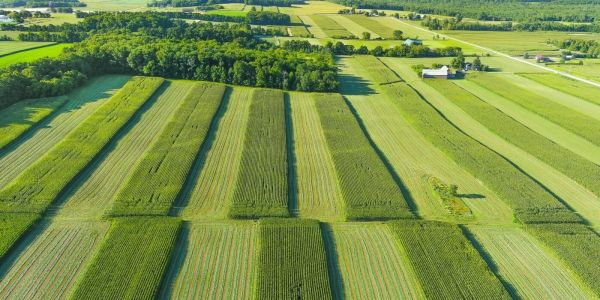In recent years, soybean fields and other crops and trees across the Midwest have been experiencing more damage from drift of herbicides, particularly those plants grown from seeds that have not been genetically modified to be herbicide-tolerant. The drift onto unintended plants causes leaves to curl and shrivel and may permanently damage a crop.
To learn more about how the different chemical agents interact in herbicide formulations, a team of researchers at the McKelvey School of Engineering at Washington University in St. Louis is developing a framework to understand how the pieces come together, said Kimberly M. Parker, assistant professor of energy, environmental and chemical engineering. Her collaborators in this work are Stephen M. Sharkey, a fourth-year doctoral student in Parker’s lab, and Brent J. Williams, associate professor of energy, environmental and chemical engineering. Their outlook was published in the journal Environmental Science & Technology Nov. 23.
In 2020, about 90% of all corn, cotton and soybeans planted in the United States were genetically modified to tolerate one or more herbicides, such as glyphosate, dicamba or 2,4-dichlorophenoxyacetic acid (2,4-D). As a result, the associated herbicides for the tolerant crops have typically seen increased use, Sharkey found. In 2014-15, before the release of dicamba-tolerant crops, dicamba was used on 2% of all U.S. soybeans, while in 2017-18, after the release of dicamba-tolerant crops, it was used on 21% of all U.S. soybeans.
Continue reading at Washington University in St. Louis
Image via Washington University in St. Louis


